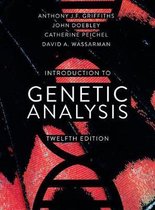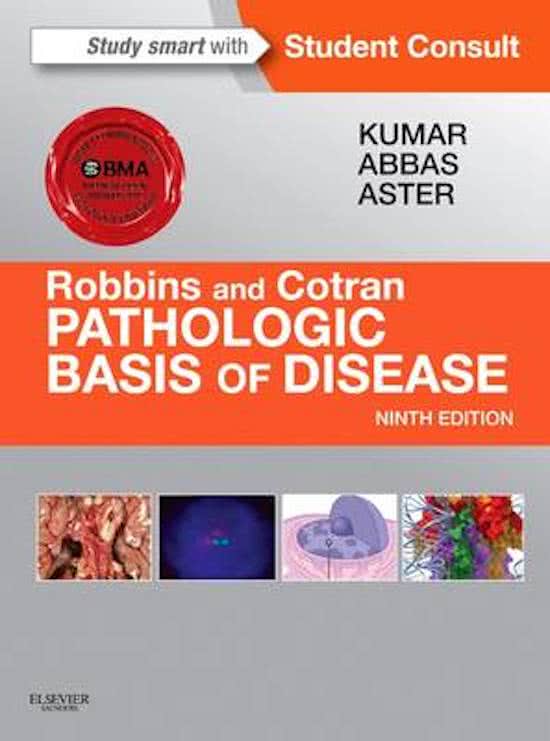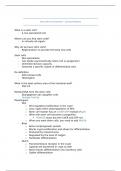Mutaties Study guides, Class notes & Summaries
Looking for the best study guides, study notes and summaries about Mutaties? On this page you'll find 13 study documents about Mutaties.
All 13 results
Sort by

-
HBO Bachelor Bedrijfskunde fase 1 (HBO Bedrijfskunde specialisatie Sales)
- Essay • 15 pages • 2023
-
- $14.99
- + learn more
HBO Bachelor Bedrijfskunde fase 1 (HBO Bedrijfskunde specialisatie Sales). Deze integrale opdracht HBO Bachelor Bedrijfskunde fase 1 is geschreven om het bedrijfsproces ‘verwerken mutaties Interpolis’ de gebruikt wordt bij de Rabobank binnen Verzekeren te analyseren. Binnen het bedieningsconcept advies-klantbediening van de Rabobank is het verwerken van Interpolis mutaties een dagelijkse aangelegenheid. Het bedrijfsproces is voor elke medewerker toegankelijk via de applicatie ARIS Conne...

-
NCOI Integrale Opdracht HBO Bachelor Bedrijfskunde fase 1 (HBO Bedrijfskunde specialisatie Sales)
- Summary • 15 pages • 2023
-
Available in package deal
-
- $12.49
- + learn more
NCOI Integrale Opdracht HBO Bachelor Bedrijfskunde fase 1 (HBO Bedrijfskunde specialisatie Sales). Voorwoord Voor u ligt het resultaat van de integrale opdracht HBO Bachelor Bedrijfskunde fase 1. Deze moduleopdracht is een onderdeel van mijn opleiding Bedrijfskunde, die ik sinds januari 2020 volg bij de NCOI Opleidingsgroep. Laat ik beginnen met mijzelf voor te stellen. Ik ben XXX, 47 jaar en geboren en getogen in Purmerend. Sinds 1998 ben ik verbonden aan de Rabobank. Ik ben begonnen als ...
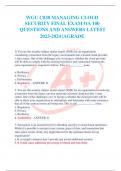
-
1. Describe how your body responds to an infection.: T cells produce cy-tokines, which stimulate B cells. B cells produce antibodies. 2. Identify role of DNA changes in congenital abnormalities.: Mutations ingenes or chromosomal abnormalities 3. How does
- Exam (elaborations) • 36 pages • 2024
-
- $20.99
- + learn more
1. Describe how your body responds to an infection.: T cells produce cy-tokines, which stimulate B cells. B cells produce antibodies. 2. Identify role of DNA changes in congenital abnormalities.: Mutations ingenes or chromosomal abnormalities 3. How does development disrupts congenital abnormalities?: Alterations ofDNA 4. Describes factors that disrupt homeostasis and how disruptions affectwellbeing.: (ex) Fluid and electrolyte shifts can cause n/v or dysrhythmias. 5. Explain RAAS: Renin-a...
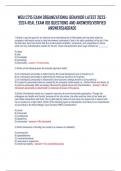
-
1. Describe how your body responds to an infection.: T cells produce cy-tokines, which stimulate B cells. B cells produce antibodies. 2. Identify role of DNA changes in congenital abnormalities.: Mutations ingenes or chromosomal abnormalities 3. How does
- Exam (elaborations) • 22 pages • 2024
-
- $30.99
- + learn more
1. Describe how your body responds to an infection.: T cells produce cy-tokines, which stimulate B cells. B cells produce antibodies. 2. Identify role of DNA changes in congenital abnormalities.: Mutations ingenes or chromosomal abnormalities 3. How does development disrupts congenital abnormalities?: Alterations ofDNA 4. Describes factors that disrupt homeostasis and how disruptions affectwellbeing.: (ex) Fluid and electrolyte shifts can cause n/v or dysrhythmias. 5. Explain RAAS: Renin-a...
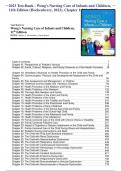
-
1. Describe how your body responds to an infection.: T cells produce cy-tokines, which stimulate B cells. B cells produce antibodies. 2. Identify role of DNA changes in congenital abnormalities.: Mutations ingenes or chromosomal abnormalities 3. How does
- Exam (elaborations) • 809 pages • 2024
-
- $35.99
- + learn more
1. Describe how your body responds to an infection.: T cells produce cy-tokines, which stimulate B cells. B cells produce antibodies. 2. Identify role of DNA changes in congenital abnormalities.: Mutations ingenes or chromosomal abnormalities 3. How does development disrupts congenital abnormalities?: Alterations ofDNA 4. Describes factors that disrupt homeostasis and how disruptions affectwellbeing.: (ex) Fluid and electrolyte shifts can cause n/v or dysrhythmias. 5. Explain RAAS: Renin-a...
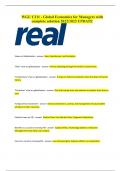
-
1. Describe how your body responds to an infection.: T cells produce cy-tokines, which stimulate B cells. B cells produce antibodies. 2. Identify role of DNA changes in congenital abnormalities.: Mutations ingenes or chromosomal abnormalities 3. How does
- Exam (elaborations) • 15 pages • 2024
-
- $20.99
- + learn more
1. Describe how your body responds to an infection.: T cells produce cy-tokines, which stimulate B cells. B cells produce antibodies. 2. Identify role of DNA changes in congenital abnormalities.: Mutations ingenes or chromosomal abnormalities 3. How does development disrupts congenital abnormalities?: Alterations ofDNA 4. Describes factors that disrupt homeostasis and how disruptions affectwellbeing.: (ex) Fluid and electrolyte shifts can cause n/v or dysrhythmias. 5. Explain RAAS: Renin-a...
Samenvatting studiestof en deel van highlight colleges
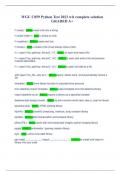
-
1. Describe how your body responds to an infection.: T cells produce cy-tokines, which stimulate B cells. B cells produce antibodies. 2. Identify role of DNA changes in congenital abnormalities.: Mutations ingenes or chromosomal abnormalities 3. How does
- Exam (elaborations) • 3 pages • 2024
-
- $39.99
- + learn more
1. Describe how your body responds to an infection.: T cells produce cy-tokines, which stimulate B cells. B cells produce antibodies. 2. Identify role of DNA changes in congenital abnormalities.: Mutations ingenes or chromosomal abnormalities 3. How does development disrupts congenital abnormalities?: Alterations ofDNA 4. Describes factors that disrupt homeostasis and how disruptions affectwellbeing.: (ex) Fluid and electrolyte shifts can cause n/v or dysrhythmias. 5. Explain RAAS: Renin-a...
Samenvatting van alle colleges, werkgroepen en small teaching activities + literatuur voor thema 1a en 1b van het blok mechanisms of disease 2
Een samenvatting van moleculaire oncologie.

How did he do that? By selling his study resources on Stuvia. Try it yourself! Discover all about earning on Stuvia




